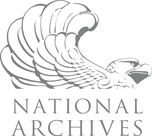 网页内容展示
网页内容展示
Newspaper or Radio Account
Objective: By viewing, analyzing, and synthesizing information from the video clip of President Roosevelt’s December 8, 1941 address to the Joint Session of Congress students will discover what happened at Pearl Harbor on the morning of December 7th 1941 and will sharpen their journalistic writing skills.
Grade Level: 6-12
Compelling Questions:
- How did the “Day of Infamy” change US and World History?
- How do we analyze news and information about important events?
Historic Significance: Having first heard news of the initial attacks by radio, the nation was hungry for further information and details surrounding the events going on in Hawaii and Washington, D.C. In the days before television and the internet, radio and newspaper accounts were the only sources of information.
Materials: Re-mastered video presentation of President Roosevelt’s December 8, 1941 address to the Joint Session of Congress (the Day of Infamy speech) and documentary sources drawn from the Roosevelt Library and Museum’s website, the Library’s archives, and other internet websites, books and magazines. For a copy of the film, please send your mailing address to Jeffrey.Urbin@nara.gov.
Procedure:
- Share with your students the re-mastered video clip of President Roosevelt’s December 8, 1941 address to the Joint Session of Congress (the Day of Infamy speech).
- You may choose to allow them time to research, gather, and analyze information about the attack at Pearl Harbor from other sources or have them work only with the information they glean from the president’s address.
- Allow students the choice to write a newspaper article or a radio broadcast script that describes the events on December 7, 1941.
- Remind students that their reporting should include:
- information from the president’s Day of Infamy address
- background information surrounding possible motives for the attack
- detailed answers and explanation of the questions, who, what, when, where, how and why
Supporting Questions:
- What lessons can we learn from the events at Pearl Harbor on December 7, 1941?
- How were the Japanese able to successfully carry out such a surprise attack?
- What were the Japanese hoping to accomplish by attacking Pearl Harbor?
- What were the immediate and direct consequences of the attack?
- What were the long range consequences of the attack?
Concluding Activity: Print and share copies of 3-4 of the student articles and ask the class to compare and contrast the “coverage” provided by each. Then ask two or three students to present their radio stories and do the same.
One Step beyond:
If an event like this were to occur today, many people would first hear about it through their social media contacts. Ask the students how they might report the event over “snap chat” or to write a “tweet” they might have sent to a friend regarding the attack on Pearl Harbor if such technology had been available in 1941.



